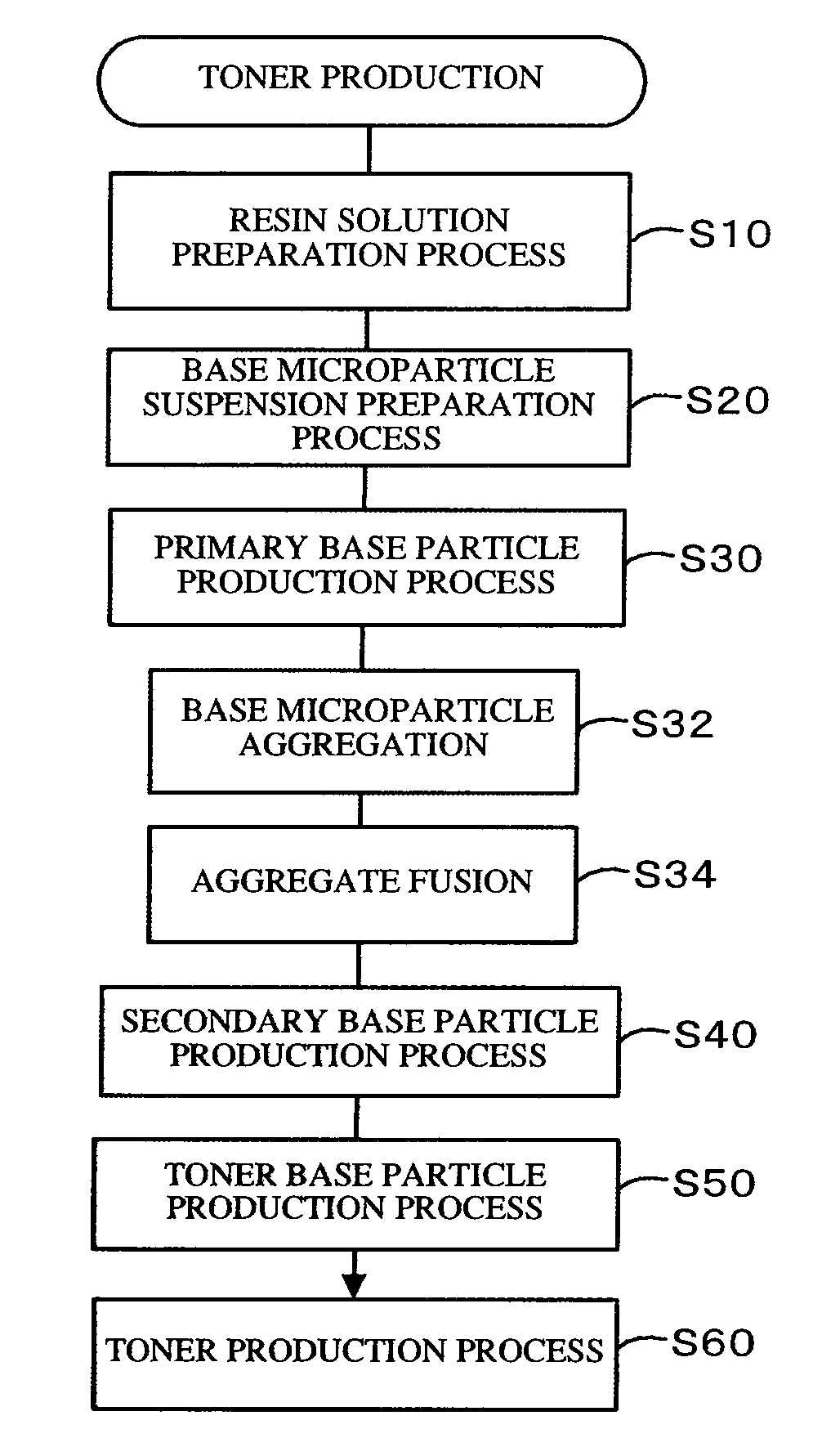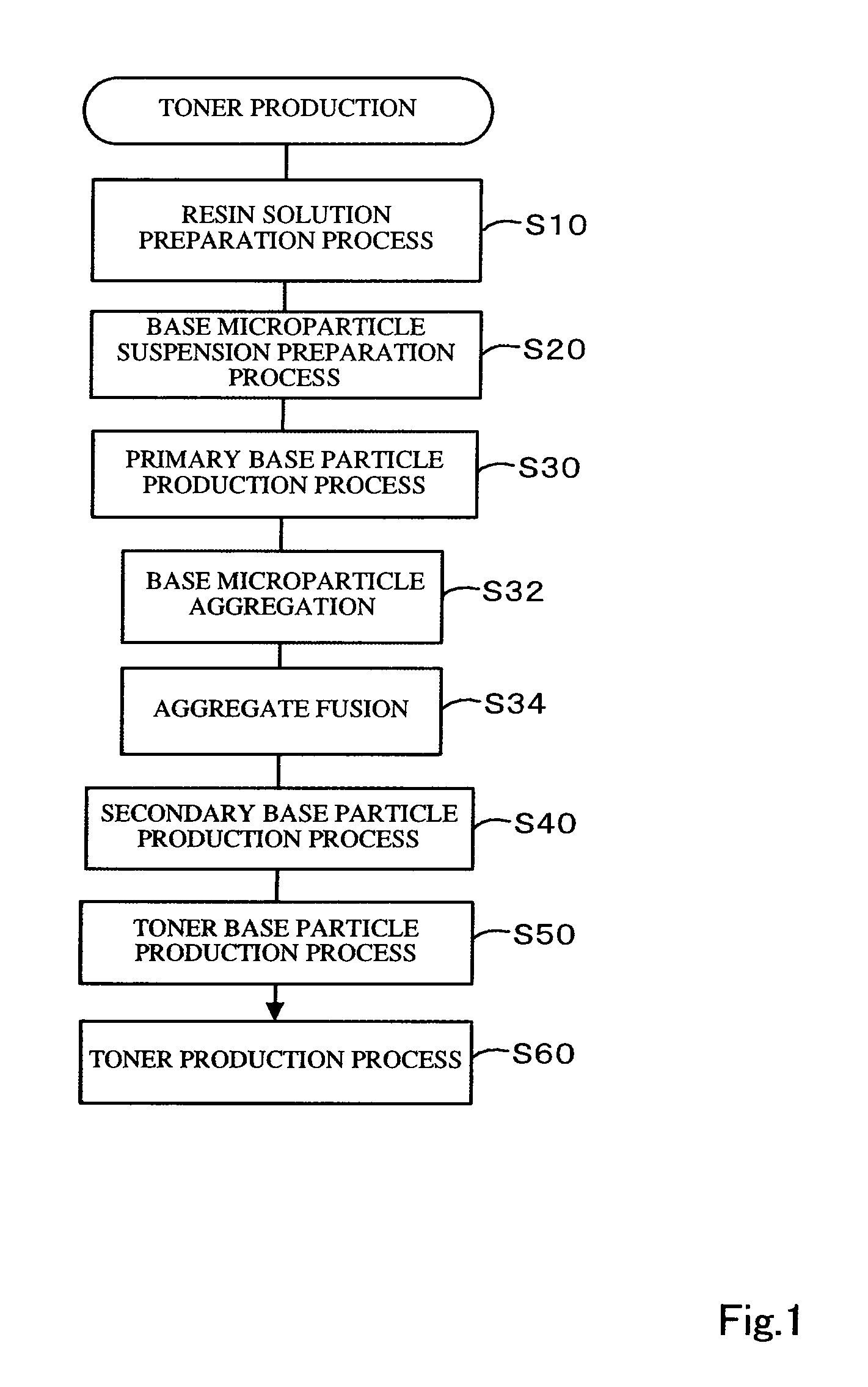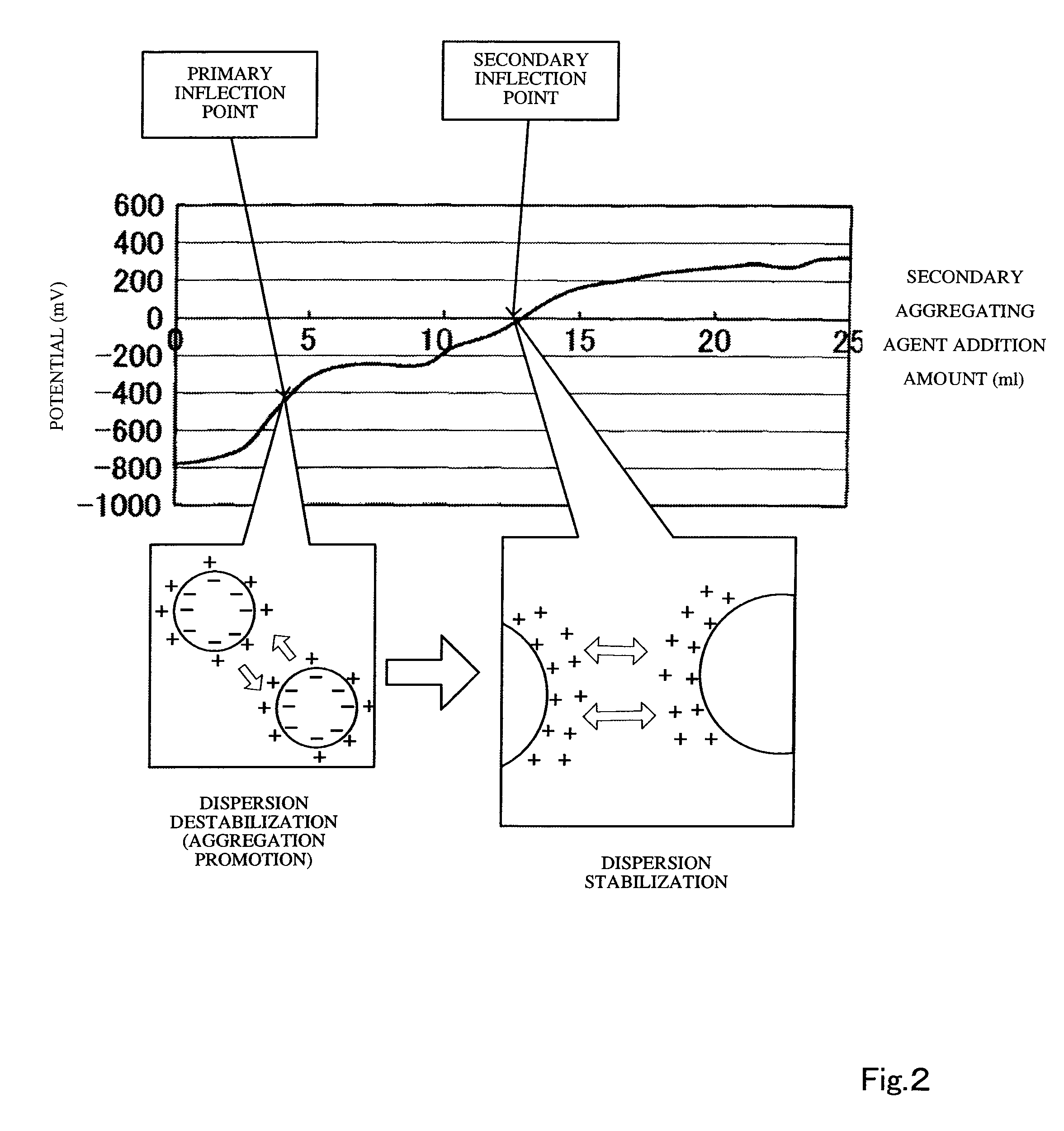Method for Producing Toner
a toner and production method technology, applied in the field of toner production methods, can solve the problems of not all the base microparticles are aggregated, degrading printing quality, increasing fogging, etc., and achieve the effects of reducing toner yield, increasing fogging, and degrading printing quality
- Summary
- Abstract
- Description
- Claims
- Application Information
AI Technical Summary
Benefits of technology
Problems solved by technology
Method used
Image
Examples
example 1
[0120](Synthesis of a Cationic Polymer-Based Aggregating Agent)
[0121]In the present example, a cationic polymer-based aggregating agent as the secondary aggregating agent used for producing the secondary base particles of the present teachings were synthesized.
[0122](Preparation of Styrene Monomers)
[0123]Firstly, distilled water (500 g) and sodium hydroxide (solid: 2 g) were charged into a 1 L beaker, where the sodium hydroxide was dissolved under stirring. Styrene monomers (500 ml) were added then to the beaker, with stirring for 5 minutes. The beaker was then left to stand to let the styrene phase and the aqueous phase separate, and the styrene phase was recovered. This operation was repeated twice on the recovered styrene phase.
[0124](Monomer Polymerization)
[0125]Besides the styrene monomers prepared as described above, an acrylate monomer, N,N-dimethylaminopropylacrylamide methyl chloride quaternary salt (DMAPAA-Q), which is an acrylic monomer having a polarity inverse to that o...
example 2
[0128]In the present example toners were produced, under the various conditions given in Table 2, using the aggregating agent solutions prepared in Example 1. The obtained toners were evaluated for particle size distribution, supernatant solids, as well as print characteristics during initial printing and long-term printing. Toner production examples, methods for evaluating the toner, and the results of the evaluations are explained below.
[0129](Production of Primary Base Particles)
[0130](1) Preparation of a Base Microparticle Suspension
[0131]Firstly, a container provided with a reflux apparatus was charged with 160 parts of a polyester resin FC1565 (Mn3,800, Mw56,000, THF insoluble fraction 2 wt %, acid value 4.4 mgKOH / g, Tg 61.9° C.; by Mitsubishi Rayon), 8 parts of carbon black #260 (Mitsubishi Chemical), 8 parts of pentaerythritol Unistar H476 (NOF Corporation) as a release agent, and 640 parts of methyl ethyl ketone (Kanto Chemical, grade 1). The container holding the above mat...
example 3
[0196]In the present example the streaming potential curves obtained upon dripping the four aggregating agents A to D synthesized in Example 1 onto the primary base particle suspension (about 10% solids) (50 g) obtained in Example 2 was measured. The measurement method was identical to that of Example 2. The results are illustrated in FIG. 5. Also, Table 5 gives the primary inflection point and the secondary inflection point, obtained on the basis of the streaming potential curve, for the primary base particle suspension.
TABLE 5Inflection points in streaming potential curve for a primarybase particle suspension (solids 10%, 50 g)Type of secondaryPrimarySecondaryaggregating agentinflection pointinflection pointA0.242.15B0.180.65C0.160.49D0.120.49
[0197]When the aggregating agents A to D are added to the primary base particle suspension, the streaming potential rises at an addition amount of the secondary aggregating agent at which the latter causes the dispersion stability of the base...
PUM
| Property | Measurement | Unit |
|---|---|---|
| Temperature | aaaaa | aaaaa |
| Temperature | aaaaa | aaaaa |
| Temperature | aaaaa | aaaaa |
Abstract
Description
Claims
Application Information
 Login to View More
Login to View More - R&D
- Intellectual Property
- Life Sciences
- Materials
- Tech Scout
- Unparalleled Data Quality
- Higher Quality Content
- 60% Fewer Hallucinations
Browse by: Latest US Patents, China's latest patents, Technical Efficacy Thesaurus, Application Domain, Technology Topic, Popular Technical Reports.
© 2025 PatSnap. All rights reserved.Legal|Privacy policy|Modern Slavery Act Transparency Statement|Sitemap|About US| Contact US: help@patsnap.com



